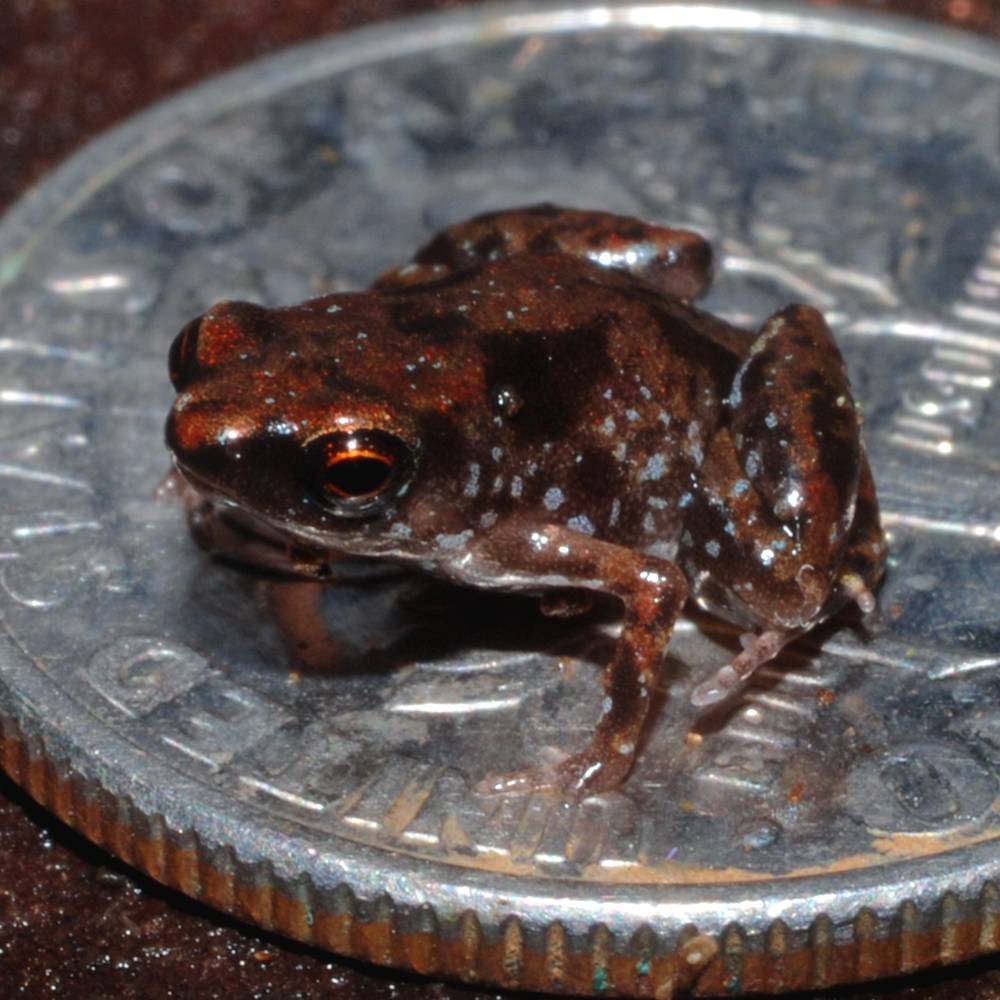The title of the world’s smallest frog goes to Paedophryne amauensis, a remarkable species discovered in Papua New Guinea. This tiny amphibian has captivated scientists and nature enthusiasts alike with its diminutive size and unique adaptations. Let’s explore the fascinating world of the world’s smallest frog and what makes it so extraordinary.
Characteristics and Appearance
Paedophryne amauensis holds the record as the tiniest vertebrate species, with adults measuring only about 0.3 inches (7.7 millimeters) in length. Their minuscule size allows them to inhabit leaf litter and other microhabitats where larger predators cannot reach. The frog’s coloration, typically brown or reddish-brown, helps it blend into its surroundings, providing an effective camouflage against predators.
Habitat and Distribution
This tiny frog is native to the tropical rainforests of Papua New Guinea. It thrives in the moist leaf litter of the forest floor, where it can stay protected from larger predators. The frog’s habitat is characterized by high humidity and dense vegetation, which provide the essential moisture and cover necessary for its survival.
Behavior and Diet
Paedophryne amauensis is nocturnal, spending its nights foraging for tiny invertebrates and organic materials found within the leaf litter. Their diet primarily consists of small insects, mites, and other minute organisms, which they can capture using their quick reflexes and agile movements.
Reproduction and Lifecycle
Little is known about the reproduction and lifecycle of Paedophryne amauensis due to its recent discovery and tiny size. However, like other frogs, it is likely to undergo a larval stage, developing from egg to adult frog within its unique environment.
Conservation Status
The conservation status of Paedophryne amauensis is not well established, but habitat loss due to logging and deforestation in Papua New Guinea could pose a threat to its populations. Protecting their natural habitats is crucial to ensuring the survival of these and other rainforest species.
FAQs About the World’s Smallest Frog
How small is the world’s smallest frog?
Paedophryne amauensis measures about 0.3 inches (7.7 millimeters) in length, making it the smallest vertebrate species known.
Where does the smallest frog live?
This frog is native to the tropical rainforests of Papua New Guinea, where it inhabits moist leaf litter on the forest floor.
What do these tiny frogs eat?
Their diet consists primarily of small insects, mites, and other minute organisms found within the leaf litter.
How do they reproduce?
While specific details are limited, they likely undergo a larval stage like other frogs, developing from egg to adult within their environment.
Are there threats to the world’s smallest frog?
Habitat loss due to logging and deforestation in Papua New Guinea poses potential threats to their populations, emphasizing the importance of habitat conservation.
How was Paedophryne amauensis discovered?
Paedophryne amauensis was discovered in 2009 by a team of American researchers during an expedition in Papua New Guinea. It was described as a new species to science in 2012.
Why is Paedophryne amauensis significant to scientists?
This frog’s discovery has contributed to understanding vertebrate size limits and biodiversity in leaf litter ecosystems, emphasizing the ecological complexity of rainforest habitats.
How does the size of Paedophryne amauensis affect its survival?
Its small size allows it to exploit microhabitats inaccessible to larger predators and competitors, which may provide ecological advantages in dense forest environments.
Can Paedophryne amauensis be kept as a pet?
Due to its tiny size and specialized habitat requirements, Paedophryne amauensis is not suitable for captivity or the pet trade.

